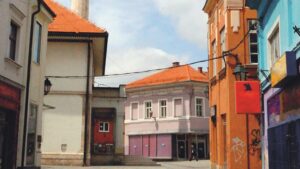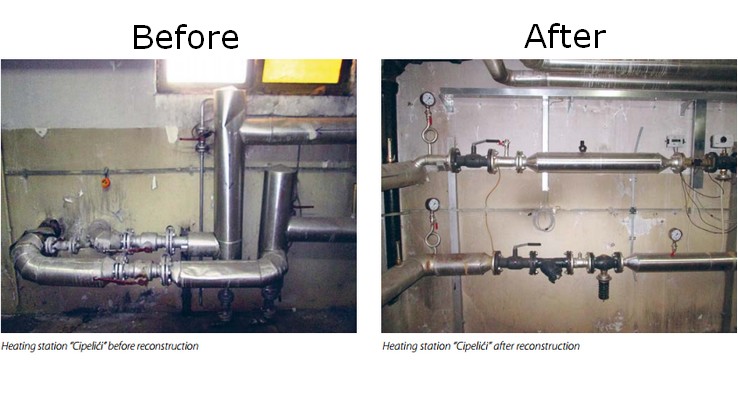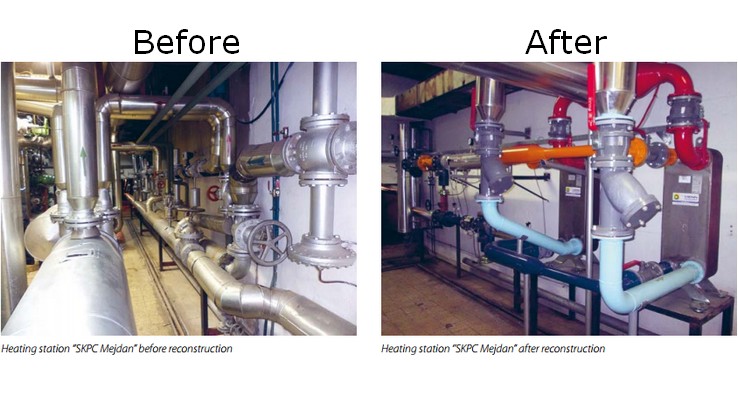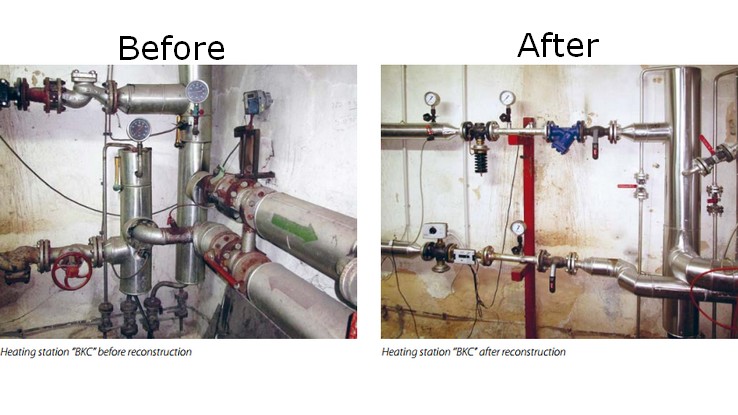- Home
- Knowledge Hub
- Case Studies
- Ambitious renovation of Bosnia & Herzegovina’s largest CHP district heating network
Ambitious renovation of Bosnia & Herzegovina’s largest CHP district heating network
- Case Studies
- 25 November 2016
- by Danfoss
 It is no more cold winter mornings for the citizens of Tuzla. Since 2011, the local District Heating Company (“Centralno grijanje” d.d. Tuzla) has carried out a major renovation of the city’s comprehensive district heating network, providing reliability of supplies, improved comfort as well as energy and cost savings. Based on thorough analysis and a long-term strategic approach, the 30 year old system is gradually transformed into a modern and smart energy system.
It is no more cold winter mornings for the citizens of Tuzla. Since 2011, the local District Heating Company (“Centralno grijanje” d.d. Tuzla) has carried out a major renovation of the city’s comprehensive district heating network, providing reliability of supplies, improved comfort as well as energy and cost savings. Based on thorough analysis and a long-term strategic approach, the 30 year old system is gradually transformed into a modern and smart energy system.
Located in the Northeastern part of Bosnia and Herzegovina, the historic city of Tuzla enjoys a continental climate with cold winters and hot summers. To meet the heating demand of the city, surplus heat from the large, municipal coal-fired power plant is used to supply district heating to a large number of homes and other buildings within the metropolitan area.
The available flow capacity of the existing, 30 year old system was 2,300 m³ /hour, whereas the required flow to fulfil the heating demand of the connected homes, public and commercial buildings and other facilities was closer to 2,800 m³ /hour.
The shortcomings of the system were especially felt in the mornings, when the inhabitants got up to cold rooms during the winter months. In order to maximize system efficiency, raise the level of end-user satisfaction and improve the stability of the system, the local Heating Company TPP Tuzla decided to carry out a complete renovation of the system.

Structured analysis and re-engineering boost efficiency
The Tuzla District Heating Company wished to create a long-term, viable solution based on thorough analyses of the current system setup, application of state-of-the-art technology and implementation of an energy management system.
“When addressing capacity problems, many district heating operators resort to fast and easy solutions, for instance by installing additional circulation pumps. We chose another approach to achieve a long-term, sustainable solution. After careful analysis of the current system set-up and operational data, we opted for a step-by-step modernization and replacement of most system components, from substations to energy meters in individual homes”, said Amer Karabegović, managing director of the Tuzla District heating company.
The following goals were set up to succeed with the ambitious renovation project:
- Supply low-temperature district heating to existing and new buildings added to the network
- Distribute heat with minimum grid loss
- Recycle heat from low temperature sources and integrate renewables, e.g. solar and geothermal heat
- Implement a smart energy system balancing demand and supply at all times
- Ensure suitable planning, cost and motivation structures to achieve a sustainable energy system

“After careful analysis of the current system set-up and operational data, we opted for a step-by-step modernization and replacement of most system components, from substations to energy meters in individual homes.” – Amer Karabegović, managing director of the Tuzla District heating company
The structured reengineering process consisted of the following, main phases:
- Inspection of all substations that were not part of the central control system and subsequent specification of required improvement measures, for instance installation of ball valves, strainers, pressure regulators, control valves, temperature and pressure sensors, weather stations, safety thermostats and electric controllers.
- The daily operation of substations and network was then measured to collect data that could be used for increasing capacity and efficiency of the system and potentially adding new connections and new supplies of thermal energy.
- The measurements and subsequent analyses revealed the need to reconstruct a number of critical substations and to carry out further analysis of pipelines to avoid soiling that hampers the network efficiency. Furthermore, the analyses revealed the need to get all operators and system components into one, integrated control and management system.
- A plan for renovation was then drawn up and the renovation commenced. A number of new control components were installed to optimize system capacity and efficiency, among others flow and temperature meters, pressure and temperature sensors, ball valves, strainers, pressure regulators, control valves, electric controllers, etc. Later, reconstruction or replacement of heat exchangers and circulation pumps will be performed to increase capacity and efficiency even more.

“Experience from other heating companies who have introduced this measure show, however, that energy consumption may drop by up to 30 %. Therefore, we have to have a new business model in place to deal with the dynamic changes in energy consumption, energy supplies and new technological opportunities.” – Amer Karabegović, managing director of the Tuzla District heating company
Ongoing optimization of the district heating system
By 2016, 98 substations have been retrofitted and 46 substations are still to go. Energy consumption has been reduced to below 22 kWh/m² , and at the same time the space heating capacity has been increased to more than 322,000 m² within the existing fl ow of 2,300 m³ /h. The total savings have been calculated to be almost 449,000 MWh.
Public facilities have received extra attention in order to match daily/ hourly use of the facilities with supply of heating and hot water. In this way, significant cost and energy savings have been achieved and a much more balanced use of the system according to the actual demand at any time.
Based on the successful renovation, the Tuzla District Heating Company has decided to add 16 new district heating zones to the current system. On the future wish list are also reconstruction of the hot water network and pumping stations, replacement of the current spiral heat exchangers with plate heat exchangers and implementation of energy efficiency measures throughout the entire system.
“Individual energy metering is one of the options we are contemplating to control energy consumption. Experience from other heating companies who have introduced this measure show, however, that energy consumption may drop by up to 30 %. Therefore, we have to have a new business model in place to deal with the dynamic changes in energy consumption, energy supplies and new technological opportunities”, says Amer Karabegović, managing director of the Tuzla District heating company.
Danfoss deliveries to the Tuzla project
- Re-engineering of 98 substations, fitted with Danfoss components: ball valves, strainers, pressure regulators, control valves, temperature and pressure sensors, safety thermostats, weather stations, electronic controllers, thermostatic radiator valves (TRVs), energy meters
- Consulting, monitoring, measurements and data analysis to support decision-making and investment strategy
Results achieved by re-engineering the Tuzla district energy system
- 30 % energy savings compared to old system before retrofit
- Capacity expanded by 36 % within the existing fl ow of 2,300 m³ /h
Source: Danfoss
Latest News
-

-
 26.10.2021 Celsius Summit 2021 – Energy Democracy
26.10.2021 Celsius Summit 2021 – Energy Democracy

